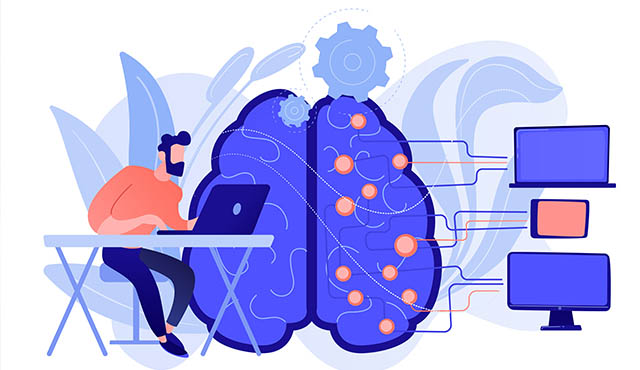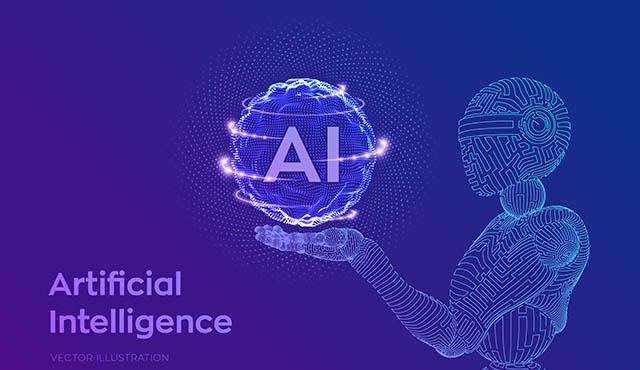What is artificial intelligence (AI)? How does it work?
Architect Shrawan Azagalle | 15 June 2023

Artificial intelligence (AI) refers to the ability of machines to understand, combine, and make sense of information, similar to how humans and animals do. It involves tasks like recognizing speech, analyzing images, translating languages, and other forms of processing input..
AI has various applications, such as improving search engines like Google Search, providing recommendations on platforms like YouTube, Amazon, and Netflix, enabling voice assistants like Siri and Alexa to understand human speech, developing self-driving cars like Waymo, creating generative or creative tools like ChatGPT and AI art, supporting automated decision-making, and excelling in strategic games like chess and Go.
As technology advances, tasks that were once considered "intelligent" are often no longer classified as AI. This is known as the AI effect. For example, optical character recognition, which reads printed text, is now seen as a common technology rather than a form of AI.
The field of artificial intelligence was established as an academic discipline in 1956. Over the years, it has gone through cycles of optimism, followed by disappointments and reduced funding (referred to as "AI winters"). However, each cycle has led to new approaches, successes, and renewed funding. AI research has explored various methods, including simulating the human brain, modeling human problem-solving, using formal logic, building large knowledge databases, and imitating animal behavior. In recent years, mathematical and statistical machine learning techniques have dominated the field, proving highly effective in solving complex problems across industries and academia.
Artificial intelligence (AI) works through a combination of algorithms, data, and computing power. Here's a simplified explanation of how AI systems typically work
1. Data Collection: AI systems require large amounts of relevant data to learn and make predictions. This data can be collected from various sources such as sensors, databases, or the internet.
2. Data Pre-processing : Before using the data, it often needs to be cleaned, organized, and prepared for analysis. This step involves removing noise, handling missing values, and transforming the data into a suitable format.
3. Training Phase: In the training phase, the AI system uses machine learning algorithms to analyze the preprocessed data. The system learns patterns, correlations, and rules from the data to build a model. This model serves as the basis for the AI system's understanding and decision-making.
4. Algorithm Selection: Depending on the problem at hand, different AI algorithms can be employed, such as neural networks, decision trees, support vector machines, or Bayesian networks. The choice of algorithm depends on the nature of the data and the specific task to be performed.
5. Model Evaluation: After training the AI model, it needs to be evaluated to assess its performance. This involves testing the model on separate data that it hasn't seen before to measure its accuracy and effectiveness.
6. Deployment and Inference: Once the AI model has been trained and evaluated, it can be deployed for real-world applications. The model takes new input data, processes it using the learned patterns and rules, and generates predictions or responses.
7. Continuous Learning: AI systems can be designed to continually learn and improve over time. This involves updating the model with new data to adapt to changing conditions and to refine its predictions and decision-making capabilities.

It's important to note that this is a high-level overview of the AI process, and the specific details can vary depending on the algorithms and techniques used. Additionally, AI encompasses a wide range of approaches, including machine learning, deep learning, natural language processing, and more, each with its own unique workings and complexities.
Certainly! Here are 10 notable examples of artificial intelligence (AI) applications:
1. Virtual Assistants: Siri, Alexa, and Google Assistant are AI-powered virtual assistants that understand and respond to human voice commands, helping with tasks like setting reminders, answering questions, and controlling smart devices.
2. Recommendation Systems: Platforms like Netflix, Amazon, and Spotify use AI algorithms to analyze user preferences and behavior, providing personalized recommendations for movies, products, and music.
3. Autonomous Vehicles: Companies like Tesla and Waymo are developing self-driving cars that use AI for perception, decision-making, and navigation, aiming to revolutionize transportation and improve road safety.
4. Image and Object Recognition: AI-powered systems like Google Photos and Facebook's facial recognition use deep learning algorithms to identify and tag people, objects, and locations in images.
5. Natural Language Processing (NLP): AI systems like chatbots, language translation tools, and sentiment analysis engines use NLP techniques to understand and generate human language, enabling communication and language-based tasks.
6. Fraud Detection: Banks and financial institutions employ AI algorithms to analyze patterns and detect anomalies in transactions, helping identify potential fraud or suspicious activities.
7. Healthcare Diagnosis: AI systems can assist in diagnosing medical conditions by analyzing patient data, medical images, and research papers, aiding doctors in making more accurate and timely diagnoses.
8. Robotics: Advanced robots like Boston Dynamics' Spot and Softbank's Pepper utilize AI to navigate their environment, interact with humans, and perform complex tasks in industries such as manufacturing and healthcare.
9. Gaming: AI has achieved remarkable performance in strategic games like chess and Go, with Deep Blue defeating chess grandmasters and AlphaGo beating world champions, showcasing the ability of AI to master complex games.
10. Cyber security: AI algorithms can detect and prevent cybersecurity threats by monitoring network traffic, identifying suspicious behavior, and defending against malware and cyberattacks.

These examples highlight the versatility and impact of AI across various domains, demonstrating its potential to enhance and transform numerous aspects of our lives.
DECLARATION: Please note that the information provided in this blog is intended for general informational purposes only. While we strive to provide accurate and up-to-date information, we cannot guarantee the accuracy or completeness of the information, and we do not assume any legal liability or responsibility for any errors or omissions. Before using any information provided in this blog, we recommend that you independently verify its accuracy and reliability through additional sources.